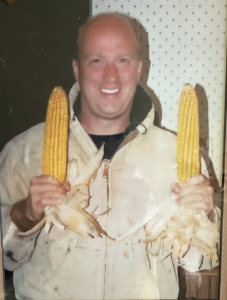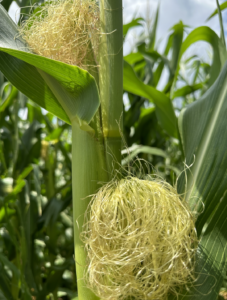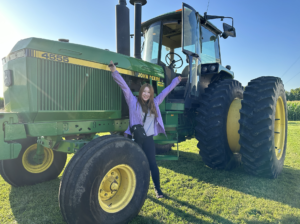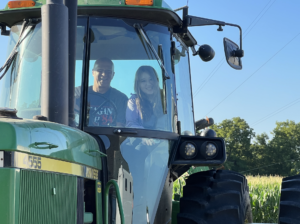Twenty years ago, I found myself in the position of operating a farm all by myself. My father, who I was farming with, passed away suddenly that January. So in addition to my full-time ag marketing job, I was flying solo across my family farm in western Illinois.
I was able to get the corn all planted in April. But then conditions turned cold. The crop took over two weeks to emerge. Cool conditions persisted, then it turned dry, and progress was stymied. The crop trudged along until tassels appeared. Then it rained; steady rains. Temperatures become moderate. I applied fungicide and fed the plants. Pollination occurred under the excellent conditions. There was very little stress during that time. And despite the slow start, I harvested our biggest corn crop ever, topping above 215 bushels per acre (the average corn yield in Illinois at that time was 150 bu/A). I’ll never forget the look on my mother’s face when I walked up to the house holding two giant ears in my hands after parking the combine at the end of the first day of harvest. That fall, I became convinced that when it comes to growing corn, nothing matters except for what happens during that two-week pollination window. I’ve since softened that stance a bit, but I stand by the notion that the most critical period in a corn plant’s life is during pollination. It also showed that those rich, black Prairie State soils can be awfully forgiving. This year, many growers near my family home have a similar plight: very rough growing conditions, with relief coming in heavy rains the past week — just as tassels popped. Time will tell if a similar scenario plays out for them as it did for me two decades ago.
Speaking of those rich black soils, many areas of Illinois received virtually no rain in June. Yet check out this soybean plant I pulled from our family farm. It’s just over knee high, already has 11 tightly stacked nodes and is loaded with flowers and pods. Some growers are blessed with fertile soil. But most others need help in building the health of their soil. Humates offer a great tool to improve organic matter and build soil fertility.
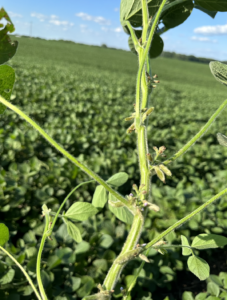
Corn on my Tennessee test farm is nearing the end of pollination. We’ve had three inches of rain since tassels began shooting. We’ll be feeding the crop again today.
Having twins? I’ve seen lots of plants with multiple ears in my corn plot. And not just along the ends. About 10-15% of all plants have multiple ears. Whether these second ears contribute to the final yield remains to be seen. But seeing so many plants with two ears is a great sign. Genetics play a role, but so does management, nutrition and of course, environmental conditions. Cool nights are preferred. Two years ago I produced 333 bu/A corn. Those ears were massive. I wondered how much bigger they could get, and what does it take to go from producing 300-bushel corn to, say, 400 or 500 bushels. One pathway would appear to be producing multiple ears per plant. I’ve heard world corn record holder David Hula say that on his record corn yields 40% of the plants produce multiple ears.
Huma® is proud to sponsor “Beyond the Yield” on August 2 in Kearney, Nebraska. This event takes growers through the entire regen ag journey, from soil testing, to implementation, to marketing. Soil Regen – co-owned by Liz Haney and world dryland corn yield record holder Russell Hedrick – is hosting the event. “Beyond the Yield” provides us with another important venue to support the regen ag movement while we meet and align with like-minded organizations and growers.
There’s no place like home. Especially when home is a farm. I’m always tickled to see someone experience “the world’s greatest profession” first-hand. This weekend I introduced a slice of farm life to my son’s girlfriend, visiting us from Osaka, Japan. Hailing from the 10th largest city in the world, Riko had seldom set foot off concrete, much less hopped over clods. Her excitement served as inspiration and reminder of how lucky we are to work between the rows.
Related Posts

Lower Operating Costs with Super Phos®
Project Summary A paper mill wastewater treatment facility uses diammonium phosphate to maintain a healthy microbial population. These microorganisms, which break down the organic matter, require the correct concentration of available phosphorus, without which the microorganisms are unable to grow and reproduce.

This Week in Ag #19
Rain makes grain. Those words are as old as farming itself. In the nation’s breadbasket – the three I states, which produce 42% of our corn and 37% of our soybeans – there’s concern over the lack of rain. That triggered a major movement in the grain market. Drought officially grips 100% of the I
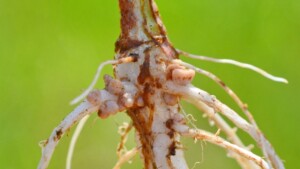
Microorganisms: The Living Engine of Soil—Part 2
In Part 2 of this series, we look at Plant-Microbial Interactions.

